First Encounter
It was in the autumn of 1954.
Prof. Israel Slomnicki and his wife, Leah, were travelling on a train from Hiroshima to Nagasaki and were conversing quietly in Hebrew in their compartment. Opposite them there sat a man, who looked at them and listened to them. Suddenly he asked them: “Isn’t that Hebrew that you are talking?” They were astonished that this man recognized their language from great many other possible languages, and asked him how he recognized the language. He replied that he had a feeling that they were Israelis and that therefore they were most probably talking in Hebrew. He took out from his suitcase a large and thick book which turned out to be a Japanese Bible. He showed them that the chapter heads were written in large Hebrew letters and added: “I wrote it myself.”
The man vis-a-vis them was Abraham Ikuro Teshima.
Restoration of Jerusalem
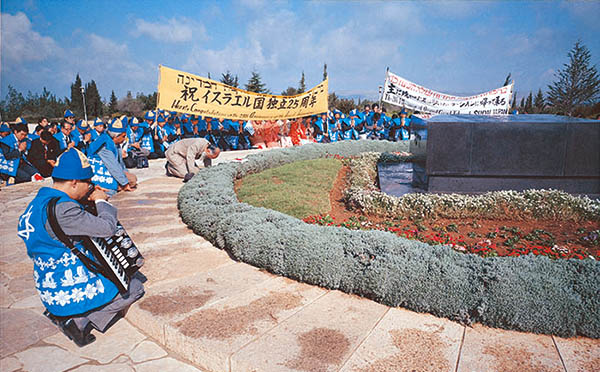
Teshima and 400 Makuya pilgrims celebrated the 25th anniversary of the State of Israel at the tomb of Theodor Herzl in March 1973.
Just before the Six-Day War, Teshima set up the “Israel Emergency Relief Committee of Japan.” When the war broke out, he hurriedly flew to Israel with relief goods. On June 12th he entered Jerusalem and rejoiced at the Wailing Wall, where he offered a prayer of thanksgiving to God for the restoration of the eternal Holy City. He said, “This day is the best and the greatest day of my life.” And he wrote:
“The God of Abraham
The God of Issac
The God of Jacob
and our God
I thank for the promise
and His truthfulness of the God of David.Ikuro Teshima,
Tokyo, Japan”
Then he placed the prayer in the cleavage of the Wall.
Campaign for Israel
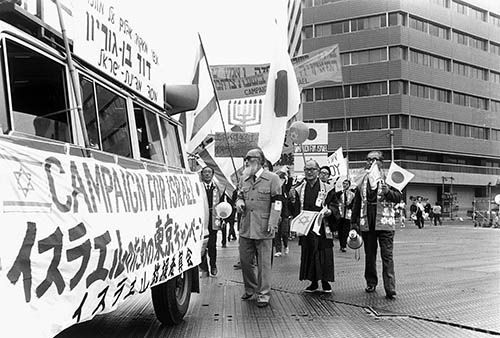
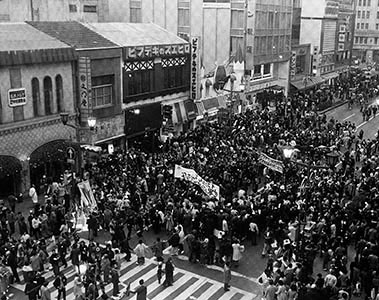
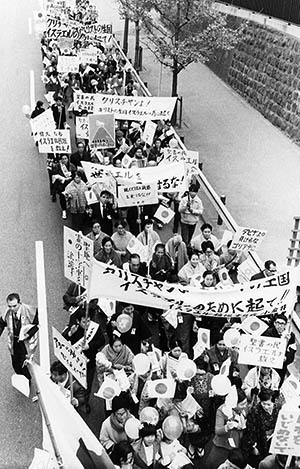
In the fall of 1973, the Arab world intensified its effort to destroy the State of Israel by using oil as a political weapon. One nation after another yielded to the Arab blackmail and deserted Israel. Japan, too, renounced her traditional policy of neutrality and adopted a pro-Arab stand.
When the Japanese government was forfeiting honor and selfrespect in exchange for temporary material gains, a small but firm voice arose from the New Zionists of Japan, who were strongly concerned with the destiny of the Jewish people. Ikuro Teshima called upon his Makuya members to stand up for Israel and organized a peace march in downtown Tokyo. Three thousand swarmed from all corners of Japan to demonstrate their fervent love for Zion.
Teshima said: “Israel was the birthplace of the Bible, and the homeland of our Redeemer. Without Israel we could have neither salvation nor redemption. In fulfillment of the Bible’s prophecy, Jerusalem was restored after 2000 years. But now new forces are rising to destroy this prophecy. What is at stake is the vision of God’s redemption. We must not allow Israel to become an orphan of nations. Israel cannot, indeed must not, be forsaken in her time of need.”
Makuya’s campaign for Israel created a sensation throughout the Jewish world. But Teshima collapsed after the demonstration; three weeks later, on the dawn of Christmas morning, the God’s apostle to Japan departed in peace with a final praise upon his lips: “Hallelujah.” He was 63 years old.
His life was the one which constantly strove and throve to please God and follow His guidance. He loved Israel, her people, and her history. Israel was on his mind to the last moment of his life.
The Golden Book
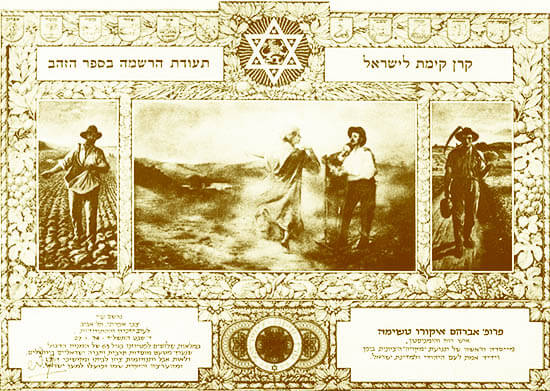
The name of Teshima was inscribed twice on the Golden Book of the Jewish National Fund; once in September, 1967 in honor of his staunch support for Israel during the Six-Day War and once in January, 1974 honoring his passing.
